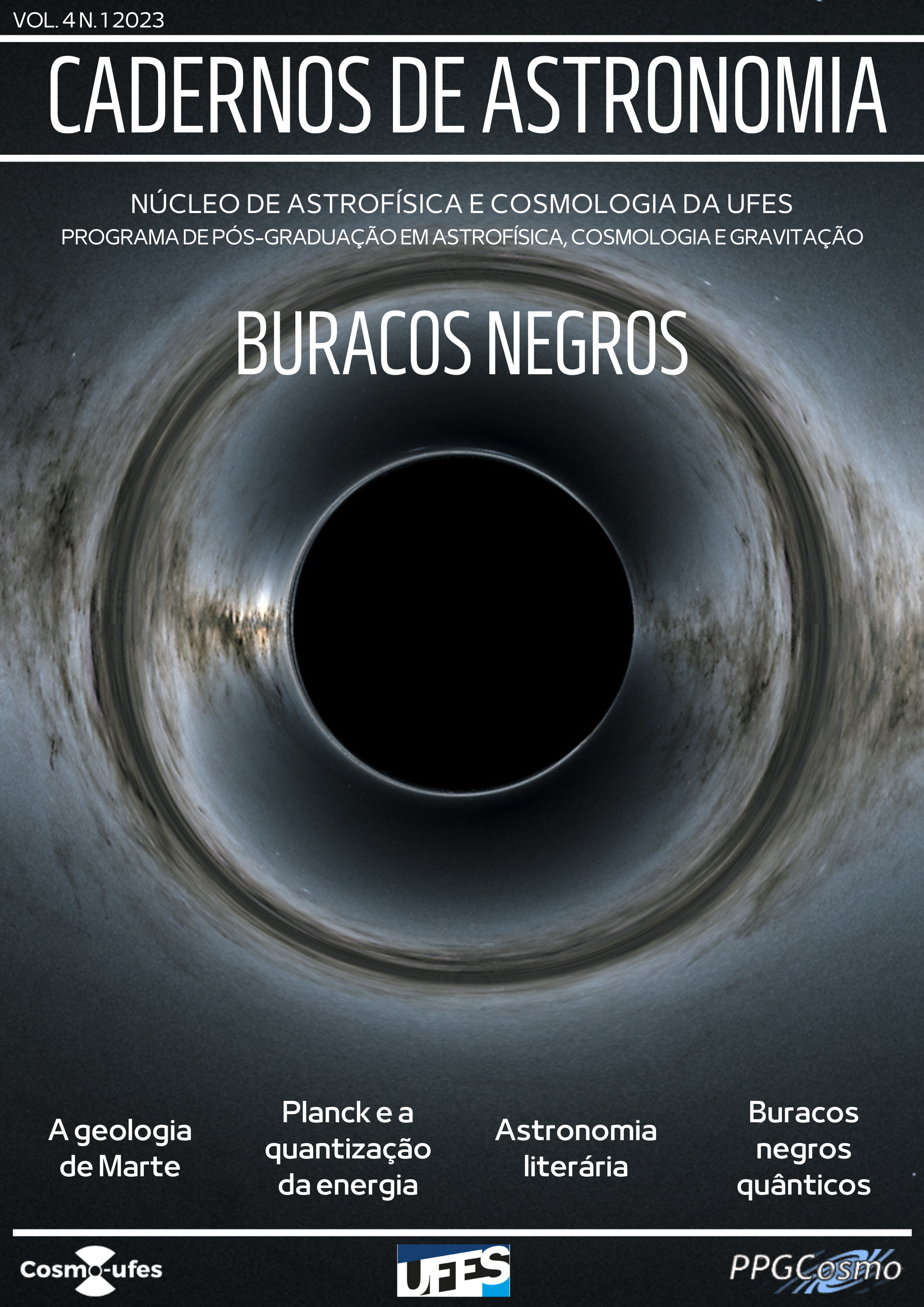Agujeros Negros
DOI:
https://doi.org/10.47456/Cad.Astro.v4n1.40266Palavras-chave:
Relatividad General, agujeros negros, ondas gravitacionalesResumo
Se presenta una introducción a los fundamentos de la Relatividad General y la noción de Agujeros Negros de una manera elemental, asumiendo conocimientos básicos de Física, y relegando a notas al pie de página aquellas acotaciones técnicas que requieran mayores conocimientos. Se da además una breve introdución histórica del concepto de agujero negro, y se mencionan los notables avances recientes en el campo experimental: la detección en 2015 de ondas gravitacionales en LIGO y las imágenes obtenidas por el Event Horizon Telescope.
Downloads
Referências
J. Michell, VII. On the means of discovering the distance, magnitude, &c. of the fixed stars, in consequence of the diminution of the velocity of their light, in case such a diminution should be found to take place in any of them, and such other data should be procured from observations, as would be farther necessary for that purpose. By the Rev. John Michell, B.D. F.R.S. In a letter to Henry Cavendish, Esq. F.R.S. and A.S, Philosophical Transactions of the Royal Society of London 74, 35 (1784).
November 27, 1783: John Michell anticipates black holes, American Physical Society News, vol. 18(10), sección This month in hystory (2009), disponible en https://www.aps.org/publications/apsnews/200911/physicshistory.cfm, acesso en feb. 2023.
C. Montgomery, W. Orchiston e I. Whittingham, Michell, Laplace and the origin of the black hole concept, Journal of Astronomical History and Heritage 12(02), 90 (2009).
J. Bradley, IV. A letter from the Reverend Mr. James Bradley Savilian Professor of Astronomy at Oxford, and F. R. S. to Dr. Edmond Halley Astronom. Reg. &c. giving an account of a new discovered motion of the fix’d stars, Philosophical Transactions of the Royal Society of London 35(406), 637 (1728).
F. Eisenhauer et al., SINFONI in the galactic center: Young stars and infrared flares in the central light-month, The Astrophysical Journal 628(1), 246 (2005).
Ver El Sitio De and Eso: https://www.eso.org/public/videos/eso0226a/.
K. Schwarzschild, Über das Gravitationsfeld eines Massenpunktes nach der Einsteinschen Theorie, Sitzungsberichte der Königlich Preussischen Akademie der Wissenschaften 189–196 (1916).
J. R. Oppenheimer e H. Snyder, On continued gravitational contraction, Physical Review 56(5), 455 (1939).
K. Thorne, Black Holes and Time Warps: Einstein’s Outrageous Legacy (Commonwealth Fund Book Program, 1995).
A. S. Eddington, A comparison of whitehead’s and einstein’s formulæ, Nature 113(2832), 192 (1924).
D. Finkelstein, Past-future asymmetry of the gravitational field of a point particle, Physical Review 110(4), 965 (1958).
R. P. Kerr, Gravitational field of a spinning mass as an example of algebraically special metrics, Physical Review Letters 11(5), 237 (1963).
B. P. Abbott et al., Observation of gravitational waves from a binary black hole merger, Physical Review Letters 116(6), 061102 (2016).
S. Doelman, The Astrophysical Journal Letters (2019), disponible en https://iopscience.iop.org/journal/2041- 8205/page/Focus_on_EHT, acesso en feb. 2023.
Downloads
Publicado
Como Citar
Edição
Seção
Licença
Copyright (c) 2023 Gustavo Dotti

Este trabalho está licenciado sob uma licença Creative Commons Attribution 4.0 International License.






